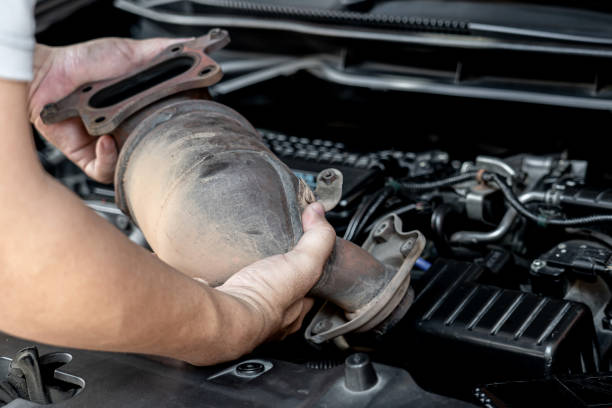Catalytic converters are an essential component of modern-day automotive engines. They are responsible for reducing harmful emissions, such as carbon monoxide, nitrogen oxides, and hydrocarbons, that result from the combustion of fuel in the engine. In recent years, there has been a growing need for high-performance catalytic converters that can meet increasingly stringent emissions standards while also improving fuel efficiency and overall engine performance.
Catalytic converters are designed to have a higher conversion rate than conventional catalytic converters. They achieve this by using advanced materials and designs that allow them to operate at higher temperatures and pressures, resulting in more efficient catalytic reactions. Additionally, they are optimized to reduce back pressure in the exhaust system, which can improve engine performance and fuel efficiency.
One of the most significant advancements in catalytic converters is the use of advanced catalyst materials that are only offered by Suncent Auto an online platform for aftermarket automobile parts. Traditional catalytic converters use precious metals such as platinum, palladium, and rhodium as catalysts. However, high-performance catalytic converters can use other materials such as ceramics, zeolites, and metal-organic frameworks (MOFs) as catalysts. These materials have shown to be more effective at catalyzing reactions, resulting in higher conversion rates and better performance.
Another critical aspect of high-performance catalytic converters is their design. They are engineered to have a larger surface area, which increases the number of active sites available for catalytic reactions. This results in a more efficient conversion of harmful emissions into less harmful substances. Additionally, the flow of exhaust gases through the catalytic converter is optimized to reduce back pressure and improve overall engine performance.
Catalytic converters are also designed to withstand higher temperatures and pressures than conventional catalytic converters. This is important because engines are becoming more efficient, and as a result, they are generating higher temperatures and pressures in the exhaust system. High-performance catalytic converters can operate at these higher temperatures and pressures without losing efficiency, making them ideal for modern high-performance engines.
In conclusion, catalytic converters are a critical component of modern-day engines, helping to reduce harmful emissions and improve fuel efficiency and overall performance. They achieve this through the use of advanced materials and designs that allow for more efficient catalytic reactions and reduced back pressure in the exhaust system. As emissions standards continue to become more stringent, the need for high-performance catalytic converters will only increase, making them a crucial area of research and development for the automotive industry.








